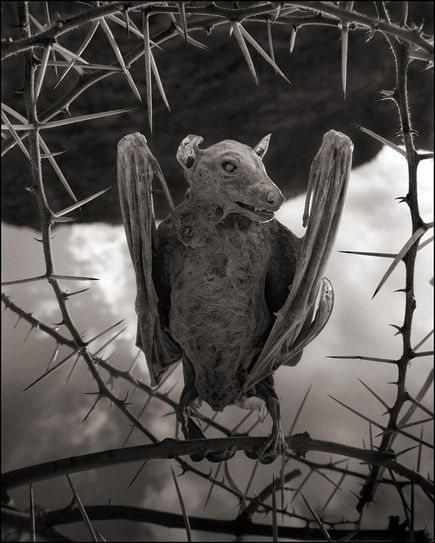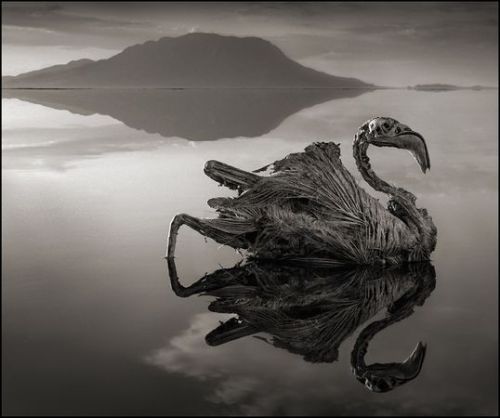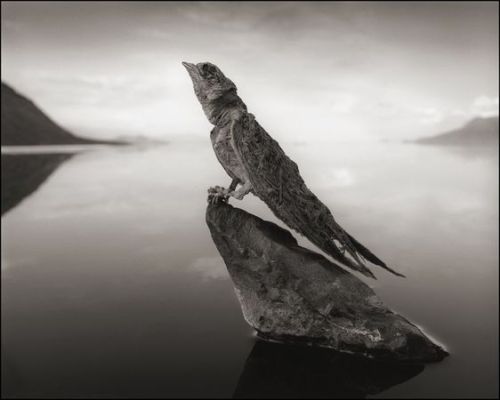odditiesoflife:Animals Preserved by Salt, Not Killed by Deadly LakeLake Natron does not turn animals
odditiesoflife:Animals Preserved by Salt, Not Killed by Deadly LakeLake Natron does not turn animals to stone and it did not “kill” these animals as reported by many websites. Lake Natron in Tanzania hosts beautiful wildlife. And for those animals that do become interred here, animals don’t immediately die and turn to stone upon touching the lake. Those that fall in and perish are exceptionally preserved by the salts that make the lake so unique, but the lake’s surface isn’t an aquatic equivalent of Medusa’s gaze.Nick Brandt unexpectedly found the dead animals that had washed up on the shore, preserved by the high content of sale in the lake, and posed them as they had been in life. The photographs, taken between 2010 and 2012, appear in Brandt’s new book Across the Ravaged Land. The pictures are meant for art and not a statement of science.Jaimi Butler, of the Great Salt Lake Institute at Westminster College in Utah, said that on the shoreline of the northern arm of the Great Salt Lake can preserve animals in much the same way. She has found birds that are so encrusted in salt you can pick them up and they will stay in the same position they were lying in.Thure Cerling, professor of geology and geophysics at the University of Utah, said by email that the animals in Brandt’s photographs likely died of natural causes. Since there are few predators in the area, their bodies remain and become salt-encrusted when the lake’s water level drops.The animals aren’t truly calcified, but are coated with sodium carbonate or sodium bicarbonate, said Cerling, who has researched the chemistry of Africa’s Rift Valley lakes. “There is almost no calcium in the lake, although the inflowing fresh waters have calcium, which precipitates as it mixes with the high-pH alkaline waters of the lake.”Although the alkaline waters of Lake Natron are harsh, they are not lifeless. Even though the lake is particularly warm and salty, algae within the lake supports a species of tilapia adapted to the unusual conditions. In addition, three-quarters of the Earth’s flamingo population use Lake Natron as a breeding site because the water stays low enough to prevent nest flooding but remains high enough that there’s a barrier between predators and the conical nests the birds build.source 1, 2, 3 -- source link




